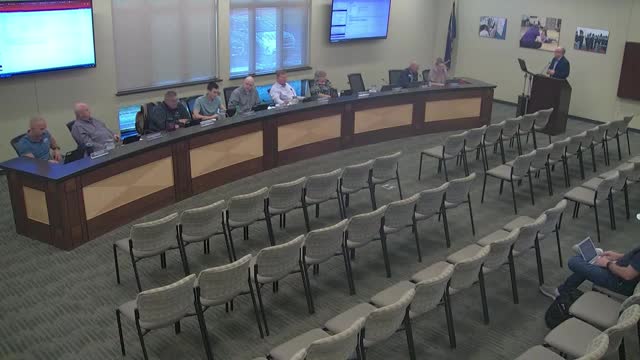Budget meeting reveals historic tax savings for residents
August 12, 2024 | Valley Center Pub Sch, School Boards, Kansas
This article was created by AI summarizing key points discussed. AI makes mistakes, so for full details and context, please refer to the video of the full meeting. Please report any errors so we can fix them. Report an error »

During the annual budget meeting, district officials presented a comprehensive overview of the fiscal plan for the upcoming year, highlighting key funding sources and adjustments to the mill levy. The meeting commenced with a detailed breakdown of the budget, emphasizing the various funds that support district operations, including the general fund, supplemental general fund, and capital outlay.
The Kansas state base aid per pupil has increased to $5,378, a rise from $5,088 in the previous year. This increase is part of ongoing adjustments following the Gannon lawsuit, which previously influenced school funding formulas. However, the current funding formula is set to expire in the next couple of years, prompting the formation of a task force to explore potential changes.
The district's headcount has shown a steady increase, with last year's official count at 3,184, up from 2,376 in 2000. Property values within the district have also risen, with an assessed valuation of $237 million this year, translating to approximately $237,000 per mill.
A significant point of discussion was the structure of the district's funding, which is divided into several designated pots of money, each with specific regulations on usage. The general fund, the largest operational fund, is primarily supported by state aid and is required to assess a minimum of 20 mills. The proposed mill levy for this fiscal year is set at 58.253 mills, a decrease of approximately 0.35 mills from the previous year, marking the lowest rate since the 2007-2008 fiscal year.
Adjustments to the mill levy include an increase in the local option budget to 13.499 mills while reducing the capital outlay by 1.1 mills. This strategic reallocation aims to bolster operational expenses amid rising inflation and costs. Additionally, the bond and interest mill levy has been lowered, providing further financial relief to taxpayers.
The meeting concluded with a discussion on the implications of these changes for local homeowners, noting that those with properties assessed at $250,000 could expect to save around $90 in taxes due to the lowered mill levy and increased exemptions. Overall, the district's financial strategy reflects a commitment to maintaining educational standards while managing taxpayer contributions effectively.
The Kansas state base aid per pupil has increased to $5,378, a rise from $5,088 in the previous year. This increase is part of ongoing adjustments following the Gannon lawsuit, which previously influenced school funding formulas. However, the current funding formula is set to expire in the next couple of years, prompting the formation of a task force to explore potential changes.
The district's headcount has shown a steady increase, with last year's official count at 3,184, up from 2,376 in 2000. Property values within the district have also risen, with an assessed valuation of $237 million this year, translating to approximately $237,000 per mill.
A significant point of discussion was the structure of the district's funding, which is divided into several designated pots of money, each with specific regulations on usage. The general fund, the largest operational fund, is primarily supported by state aid and is required to assess a minimum of 20 mills. The proposed mill levy for this fiscal year is set at 58.253 mills, a decrease of approximately 0.35 mills from the previous year, marking the lowest rate since the 2007-2008 fiscal year.
Adjustments to the mill levy include an increase in the local option budget to 13.499 mills while reducing the capital outlay by 1.1 mills. This strategic reallocation aims to bolster operational expenses amid rising inflation and costs. Additionally, the bond and interest mill levy has been lowered, providing further financial relief to taxpayers.
The meeting concluded with a discussion on the implications of these changes for local homeowners, noting that those with properties assessed at $250,000 could expect to save around $90 in taxes due to the lowered mill levy and increased exemptions. Overall, the district's financial strategy reflects a commitment to maintaining educational standards while managing taxpayer contributions effectively.
View full meeting
This article is based on a recent meeting—watch the full video and explore the complete transcript for deeper insights into the discussion.
View full meeting
